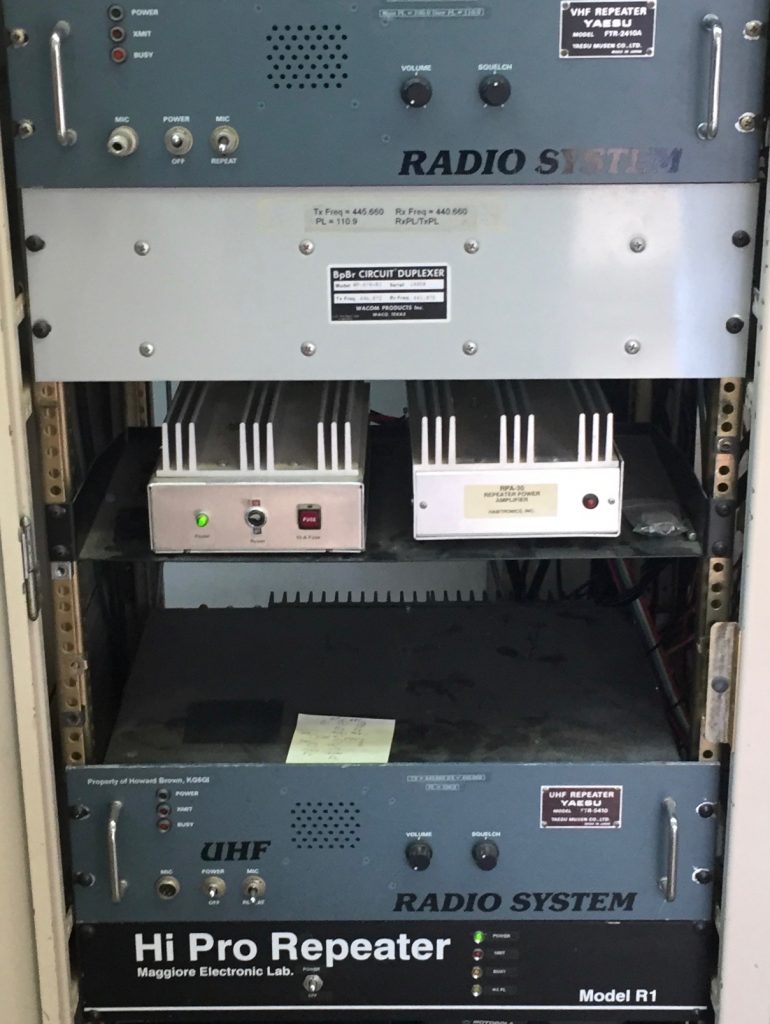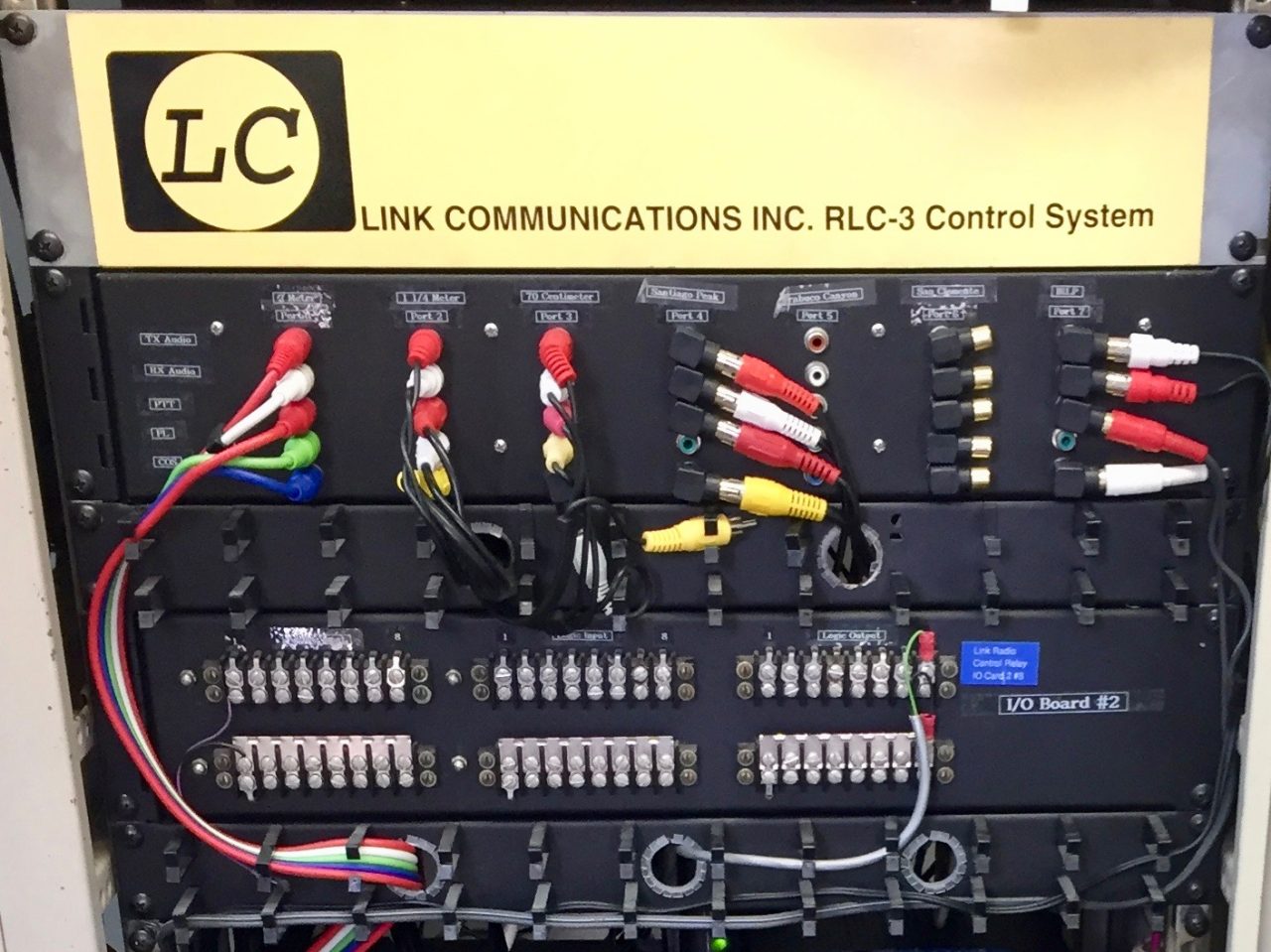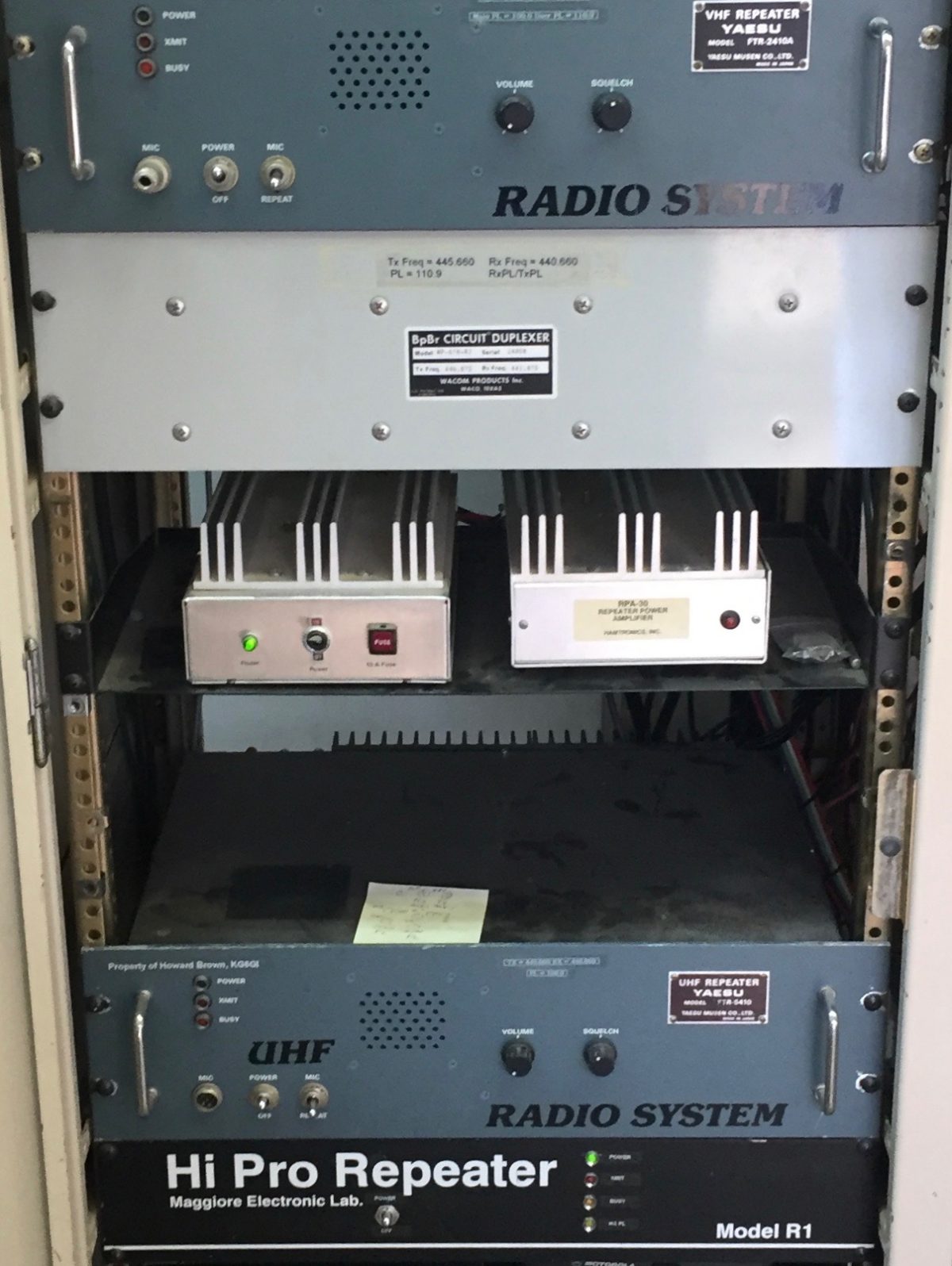SOARA has seven repeaters at the Temple Hill repeater site in Laguna Beach. Four of them are D-STAR digital repeaters. There are D-STAR modules for 2m, 440, and 1.2 GHz Digital Voice (DV) and one for 23cm Digital Data (DD). The three analog repeaters are on 2m, 220, and 440.
An svxLink node provides EchoLink and inter-site linking over the Internet. Motorola UHF radios provide an RF link to a pair of repeaters on Santiago Peak. The analog machines are interconnected via a Link Communications RLC-3 8-port repeater controller.
Much of this equipment has been running at this site for many years. SOARA has purchased newer equipment to replace the analog repeater systems.
Current Repeaters
Note: A “repeater” consists of transmitter and receiver radios along with (often large) duplexer or “cavity” filters that allow for full duplex operation, transmit and receive antennas or a single combined antenna. Lastly, the receiver and transmitter are interconnected by a repeater controller that manages the audio path.
2 Meter Repeater: The previous Yaesu/Vertex FTR-2410B (circa 1980’s) repeater was recently replaced with a newer Vertex VXR-5000V (circa 1990’s). The newer repeater included a 30 watt PA and so the external Hamtronics PA on the old machine was decommissioned.

The current analog UHF repeater is an FTR-5410 (circa mid-1980’s) with an external Hamtronics Power Amplifier. The current 220 repeater is a Maggiore Labs Hi Pro R1 Repeater (circa mid-1990’s).
New Equipment
As noted earlier, a Vertex VXR-5000V was installed in October, 2020 to replace the VHF repeater. We have procured a BridgeCom BCR-220 repeater to replace the Maggiore repeater and a BridgeCom/ComLink CS-540U to replace the FTR-5410 repeater. A new RLC Club Deluxe II repeater controller will replace the RLC-3 controller.



The process of replacing the repeater controller consists of designing and building the necessary audio/control signal interface cabling between the repeater radios and repeater controller. The repeater controller needs to be configured for the specific hardware requirements of each connected radio, e.g. PTT/COR “active high/low” polarity. Timers, macros, IDs, announcements, etc. need to be configured in the new controller.
Audio levels for the each transmitter and receiver must be carefully adjusted in the controller such that any repeater radio on any port can be linked to any other port with the levels remaining consistent. Once everything is interconnected, it must be tested before finally installing the new equipment at the repeater site.
At Temple Hill, the current standard for interconnections between the repeater radios and repeater controller is through an RCA connector patch field. The plan is to replace this patch field with direct cabling between each repeater radio and the controller, using “D-Subminiature”connectors and the RLC repeater controller wiring standard. The new Vertex repeater has already been installed in this manner.

Current Status
The new RLC controller, repeater radios, link radios, and svxLink interface have been assembled on the bench and I am in the process of programming the new repeater controller and adjusting audio levels, deviation, etc. It will be 2-3 months before all of the new equipment will be installed at the repeater site but you may hear some of it on the air from my QTH ahead of that.
Vy 73,
Brian
NJ6N

Leave a Reply